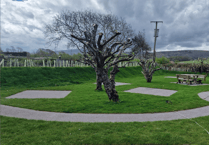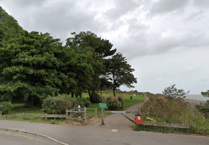A POTENTIALLY damaging strike by more than 100 workers on the Hinkley Point C nuclear power station construction site was this week avoided at the eleventh hour.
More than 100 staff were to have walked out in a pay dispute with employer TG Tunnelling (TGT) after members of the GMB and Unite unions voted to strike.
Hinkley C is already running up to six years late, with its first electricity possibly not being produced until 2031.
At the same time, the estimated cost of building it has risen by more than two-and-a-half times from £18 billion to nearly £48 billion.
More delays could have resulted if the tunnelling crews had downed tools.
They were unhappy with HMRC tax charges which were wrongly imposed on them last year, but have now accepted a settlement which will cost TGT £2 million as they receive payments from the firm to cover the tax bills.
GMB organiser Tim Northover said: “GMB members have accepted an offer which means they will not be out of pocket.
“As a result, today’s strike has been cancelled.
“Hopefully, we will now have time to resolve the wider issues around the dispute in good faith.

“We retain the strike mandate and will not hesitate to set further dates for industrial action, if necessary.”
The backdated bills were said to have arisen because tax was not deducted from lodging allowances paid to labourers.
The outstanding ‘wider issues’ include TGT seeking to transfer up to four years of historical tax liability onto employees, with HMRC expected to announce a decision on the matter later this month.
Mr Northover said the union was optimistic it would not ‘adversely effect employees’ as it would be hard for the company to convince the taxman it took ‘reasonable care and this was somehow an error made in good faith’.
TGT has been contracted by Balfour Beatty for one of the world’s most complex marine engineering projects.
It is constructing three tunnels under the Severn Estuary seabed which will supply cooling water for the Hinkley C nuclear reactors and then return it to the sea.
State-of-the-art technology is being used to excavate five-and-a-half miles of tunnels which will be lined with 38,000 concrete segments forming 6,000 lining rings.
Three tunnel boring machines with rotating cutting wheels are being used to excavate two, two-mile intake tunnels, and one, 1.1-mile outfall tunnel.
The tunnels will connect to the seabed through vertical shafts and will be capped with four intake and two outfall heads, each weighing nearly 5,000 tonnes, which will let sea water pass into the tunnels.
Another half-a-mile of underground access and service tunnels are also being excavated and reinforced using a method known as sprayed concrete lining.





Comments
This article has no comments yet. Be the first to leave a comment.